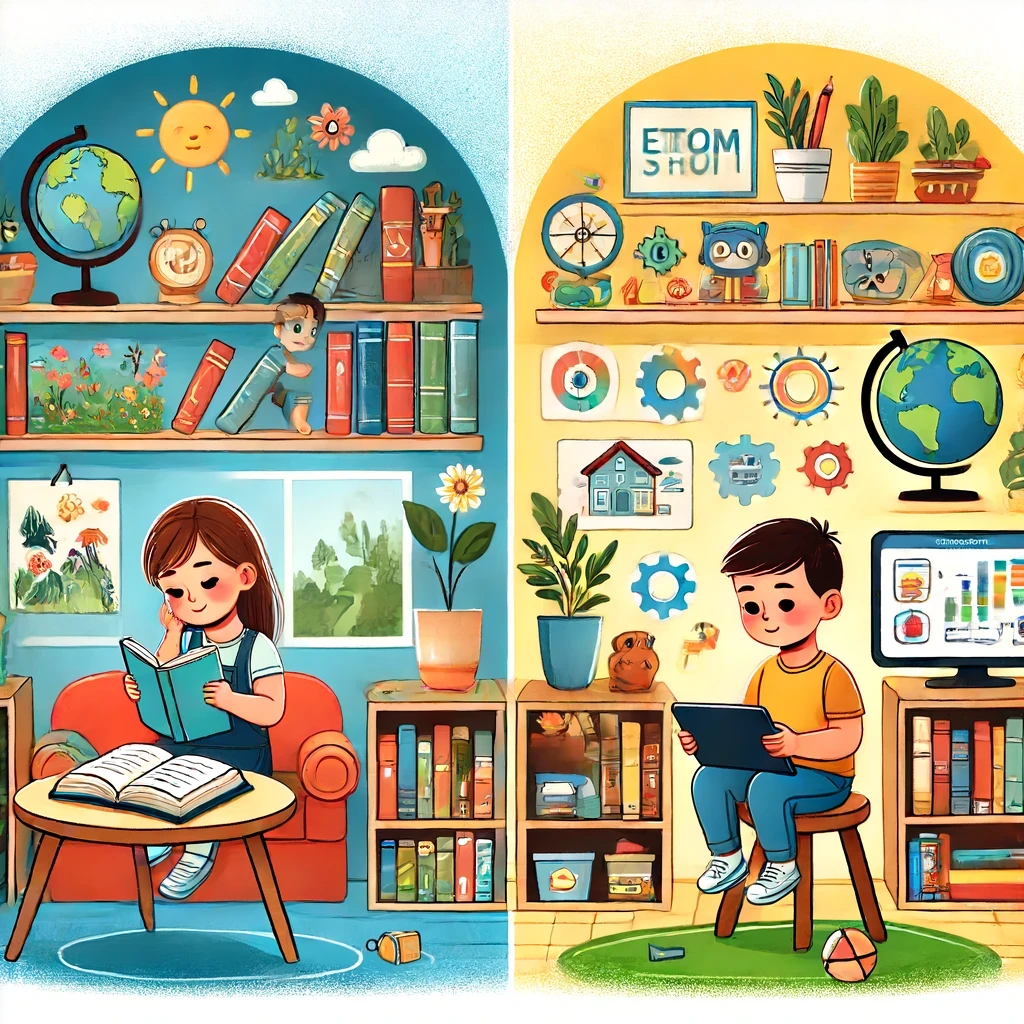In today’s digital age, children are growing up surrounded by screens. From tablets and smartphones to computers and televisions, digital devices are an integral part of their daily lives. While these technologies offer educational benefits, it’s crucial to balance screen time with physical learning activities like reading physical books. Here’s how to find the right balance between screen time and story time to promote a well-rounded education for your children.
1. Understanding the Benefits of Screen Time
Educational Apps and Games: Digital devices can provide access to a plethora of educational apps and games that make learning interactive and fun. These tools can help children develop skills in math, reading, science, and more.
Interactive Learning: Digital platforms often include interactive features that engage children in active learning. For example, educational videos, online quizzes, and virtual field trips can enhance their understanding of various subjects.
Access to Information: The internet provides instant access to a vast array of information, enabling children to explore their interests, conduct research, and expand their knowledge beyond the classroom.
2. The Importance of Physical Learning and Story Time
Developing Literacy Skills: Reading physical books helps children develop essential literacy skills. The tactile experience of turning pages, following along with text, and seeing illustrations enhances comprehension and retention.
Fostering Imagination and Creativity: Physical books allow children to immerse themselves in stories, using their imagination to picture scenes and characters. This creative engagement is vital for cognitive and emotional development.
Building Attention and Focus: Reading books helps children build their attention span and focus, as it requires sustained concentration. This skill is crucial for academic success and overall cognitive development.
Promoting Bonding and Communication: Story time often involves reading aloud with parents or caregivers, promoting bonding and communication. This shared experience can foster a love for reading and create lasting memories.
3. Strategies for Balancing Screen Time and Story Time
Set Clear Limits: Establish clear guidelines for how much screen time is allowed each day. The American Academy of Pediatrics recommends no more than one hour of screen time per day for children aged 2 to 5, and consistent limits for older children.
Create a Schedule: Balance digital and physical learning by creating a daily schedule that includes designated times for both screen activities and reading. Ensure that there is a healthy mix of both to support well-rounded development.
Prioritize Quality Content: Not all screen time is created equal. Choose high-quality, educational content for your children’s digital activities. Look for apps, games, and videos that are age-appropriate and promote learning.
Encourage Physical Activity: Balance sedentary screen time with physical activities. Encourage your children to play outside, participate in sports, or engage in creative play that doesn’t involve screens.
Make Story Time Special: Create a cozy and inviting reading nook where children can enjoy their books. Make story time a special, uninterrupted part of your daily routine, fostering a love for reading.
Model Healthy Habits: Children often mimic the behavior of adults. Model healthy screen habits by limiting your own screen time and showing enthusiasm for reading and other offline activities.
4. Integrating Digital and Physical Learning
Digital Storytelling: Combine the best of both worlds by using digital storytelling tools. Interactive e-books and audiobooks can be a fun supplement to physical books, especially for reluctant readers.
Educational Programs: Incorporate educational programs and documentaries into your child’s screen time. These can provide valuable information and spark interest in new topics that can be further explored through books.
Interactive Reading Apps: Use interactive reading apps that complement physical books. These apps can enhance vocabulary and comprehension through interactive features like word highlights, pronunciations, and quizzes.
5. Monitoring and Adjusting
Regular Check-Ins: Regularly assess your child’s screen time and reading habits. Make adjustments as needed to ensure a balanced approach that supports their overall development and well-being.
Feedback from Children: Involve your children in the decision-making process. Ask for their feedback on the balance between screen time and story time and make adjustments based on their interests and needs.
Stay Informed: Keep yourself informed about the latest research and recommendations on screen time and child development. This knowledge will help you make informed decisions that benefit your children.

Conclusion
Balancing screen time and story time is crucial for fostering a well-rounded education for children. While digital devices offer valuable learning opportunities, physical books and offline activities are essential for developing literacy skills, imagination, and focus. By setting clear limits, creating a balanced schedule, and prioritizing quality content, parents and caregivers can ensure that children benefit from the best of both worlds. Encouraging healthy habits and integrating digital and physical learning will help children thrive in today’s digital age.
